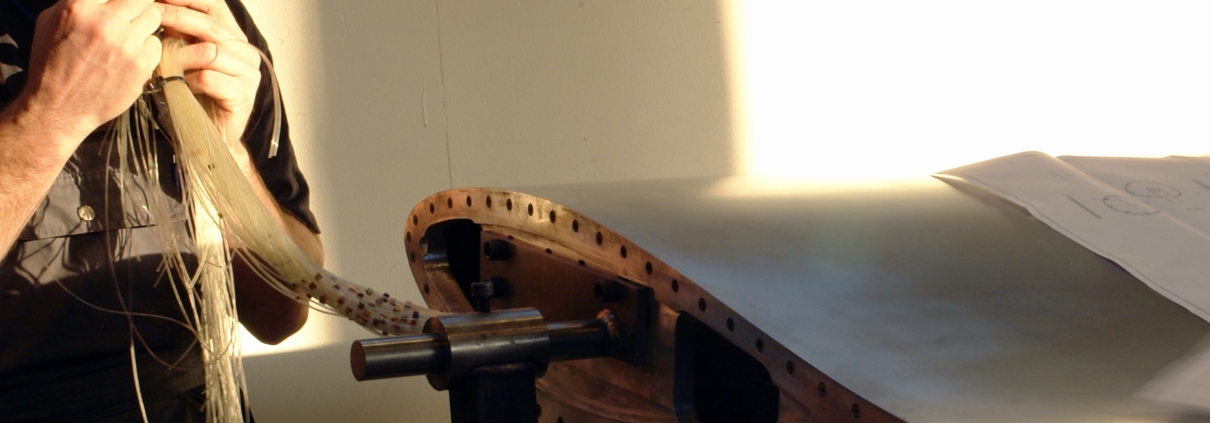Customer-specific blade profiles from RIVAL help generate valuable test data for Danish and thus the world’s leading wind turbine manufacturers as well as universities working on developing the wind turbines of the future.
Wind power is a major focus area in Denmark, and the government has made it a firm objective that sustainable energy must cover 100% of the Danish energy consumption by 2050. Danish wind turbine manufacturers are dominant in Europe and work hard to maintain this position in a market that has grown by more than 25% per year for the last 18 years.
Full-scale tests are becoming a challenge
As part of this development, the wind turbines are becoming bigger and bigger. This creates challenges when it comes to testing the blades for capacity and safety without having the facilities to do full-scale tests. The blades are considered one of the most critical parts of a wind turbine, and today the average blade is around 90 metres long. Blades of up to 107 metres are on their way. Design, materials and solutions are therefore often validated on smaller blades or using scaled tests.
The best approximation
For several years, RIVAL has collaborated with leading wind turbine manufacturers and several universities to develop blade profiles (cross sections) that give the best possible approximation of full-scale blades as regards design, surface, material and execution. “Today we can offer our customers a tried and tested product that complies with the strict requirements to the blade profiles used in the tests,” says development engineer Esben Sarenbæk from RIVAL. “We produce many different blade profiles each year. The customers typically test one blade at a time, perhaps with 2–4 different profiles, and we deliver one a week during the test period.”
“Feinschmeckerei”
“We typically receive a 3D drawing from the customer, which we process in our CAD system, and there are a number of processing and assembly requirements that we have to comply with. A finished wind turbine blade, for example, has no joints, so neither do our blade profiles. During the final processing stage, all blade profiles are polished by hand so that even the slightest groove is completely removed. The blade model contains a number of 0.4 mm pressure holes that are connected to a pressure scanner by means of thin urethane hoses.”
In its work with blade profiles, RIVAL focuses on surface smoothness, homogeneity and contour in order to create the best flow around the blade profile and achieve the best approximation of the theoretical dimensions. This produces the best possible data for analysis by the customer.
Well-documented blade profiles
The blade profiles are also very well documented, and measurements are taken to check all the customer’s dimensions. Everything is documented in a report, which is attached to the individual profile. The profile is packed in a custom-made transport box which protects it both during transport and subsequent storage at the customer’s premises.
Close collaboration on development
Today, RIVAL collaborates with both Danish and foreign universities as well as wind turbine manufacturers about the further development of the blade profiles. “We have accumulated considerable competence in the area and often serve as a sounding board,” says Esben. “Recently we were contacted by a Dutch university which is in the process of developing a new model, and we have also manufactured a blade profile for the new wind tunnel at the Technical University of Denmark.”
More news



